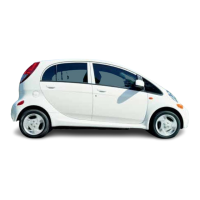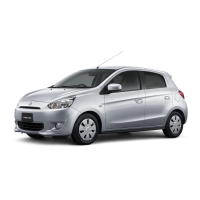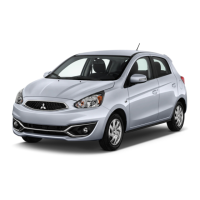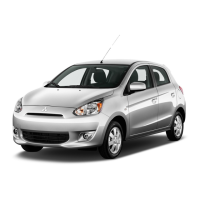Chapter 2 Part D General engine overhaul procedures m-25
21.9a Installing the spacer/expander in the oil control
ring groove
21 Piston rings - installation
Refertoillustrations21.3,21.4, 21.5,21.9a, 21.9b, 21.11 and21.12
1 Before installing the new piston rings, the ring end gaps must be
checked. It’s assumed the piston ring side clearance has be$n checked
and verified correct (see Section 17).
2 Lay out the piston/connecting rod assemblies and the new ring sets
so the ring sets will be matched with the same piston and cylinder during
the end gap measurement and engine assembly.
3 Insert the top (number one) ring into the first cylinder and square it up
with the cylinder walls by pushing it in with the top of the piston
(see illus-
tration).
The ring should be near the bottom of the cylinder, at the lower
limit of ring travel.
4 To measure the end gap, slip feeler gauges between the ends of the
ring until a gauge equal to the gap width is found
(see illustration).
The
feeler gauge should slide between the ring ends with a slight amount of
drag. Compare the measurement to this Chapter’s Specifications. If the
gap is larger or smaller than specified, double-check to make sure you
have the correct rings before proceeding.
5 Ifthegapistoosmall,itmustbeenlargedortheringendsmaycomein
contact with each other during engine operation, which can cause serious
engine damage. The end gap can be increased by filing the ring ends very
carefullywith afinefile. Mountthefilein aviseequippedwithsoftjaws, slip
the ring over the file with the ends contacting the file teeth and slowly move
the ring to remove material from the ends. When performing this opera-
tion, file only from the outside in
(see illustration).
6 Excess end gap isn’t critical unless it’s greater than 0.040-inch.
Size and maker marks
1
Sizkyd maker ~
L
I
Tapered
21.11 The number 1 (top) and number 2 compression rings have
different cross-sections - be sure to install them in the correct
locations with the marks facing UP
21.9b DO NOT use a piston ring installation tool when installing
the oil ring side rails
Again, double-check to make sure you have the correct rings for the en-
gine.
7 Repeat the procedure for each ring that will be installed in the first cyl-
inder and for each ring in the remaining cylinders. Remember to keep
rings, pistons and cylinders matched up.
8 Once the ring end gaps have been checked/corrected, the rings can
be installed on the pistons.
9 The oil control ring (lowest one on the piston) is usually installed first.
It’s composed of three separate components. Slip the spacer/expander
into the groove
(see illustration).
If an anti-rotation tang is used, make
sure it’s inserted into the drilled hole in the ring groove. Next, install the
lower side rail. Don’t use a piston ring installation tool on the oil ring side
rails, as they may be damaged. Instead, place one end of the side rail into
the groove between the spacer/expander and the ring land, hold it firmly in
place and slide a finger around the piston while pushing the rail into the
groove (see
illustration).
Next, install the upper side rail in thesame man-
ner.
IO ‘After the three oil ring components have been installed, check to
make sure both the upper and lower side rails can be turned smoothly in
the ring groove.
11 The number two (middle) ring is installed next. It’s usually stamped
with a mark, which must face up, toward the top of the piston
(see illustra-
tion). Note: Always follow the instructionsprinted on the ringpackage or
box-differentmanufacturersmayrequiredifferentapproaches. Don’tmix
up the top and middle rings, as they have different cross sections.
12 Use a piston ring installation tool and make sure the identification
mark is facing the top of the piston, then slip the ring into the middle groove
on the piston
(see illustration).
Don’t expand the ring any more than nec-
essary to slide it over the piston.
21.12 Installing the compression rings with a ring expander -
the mark (arrow) must face up

